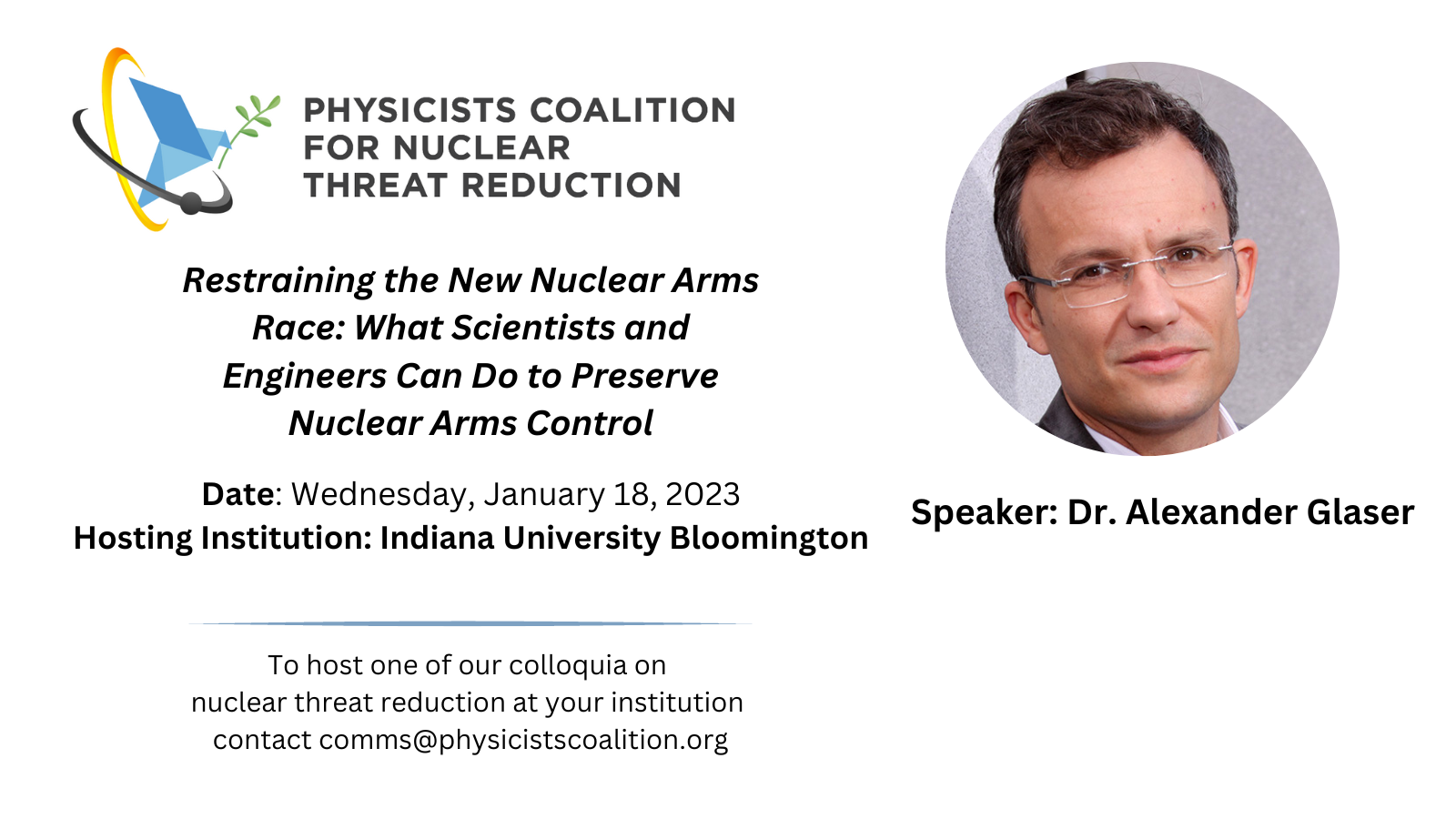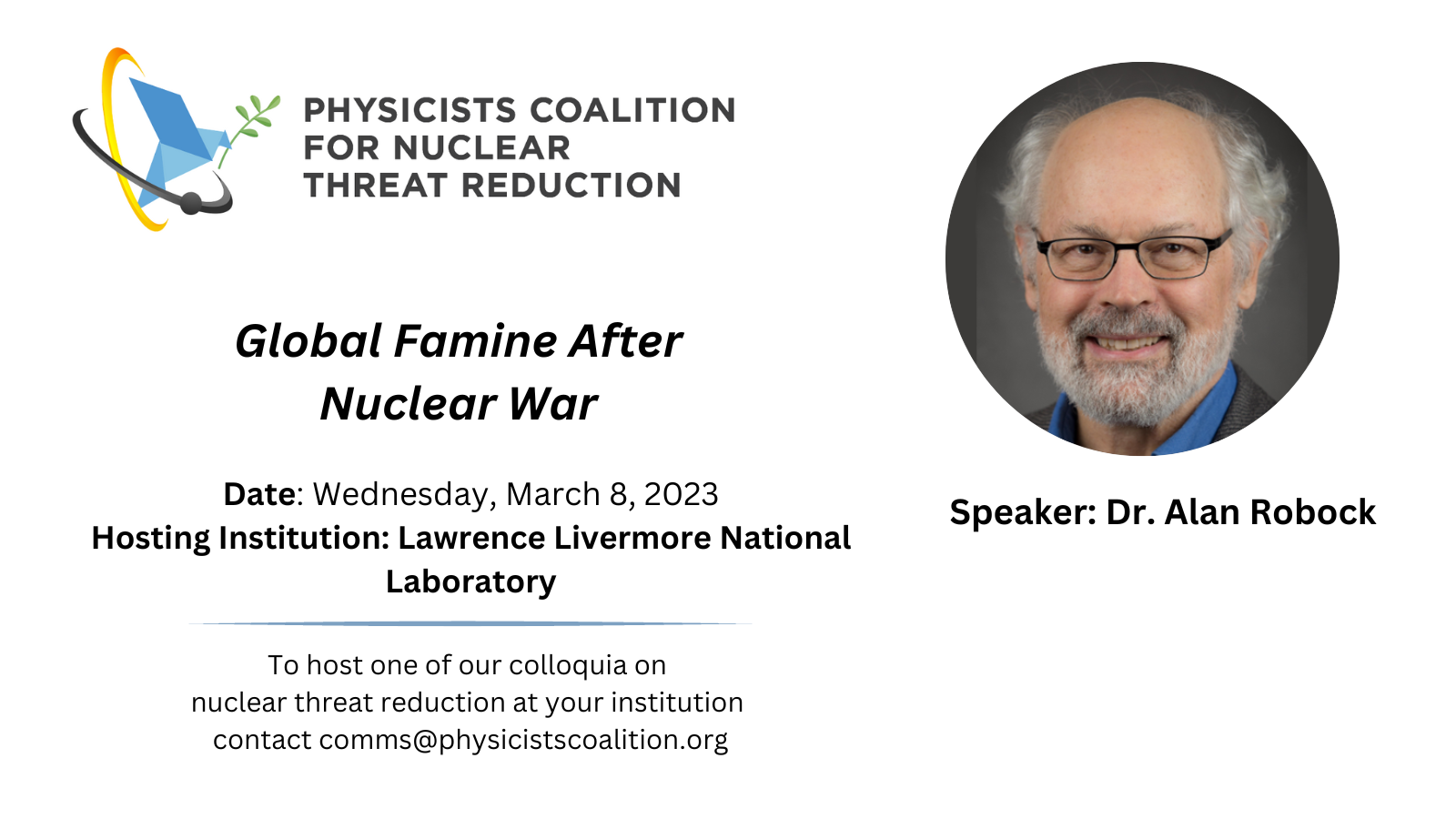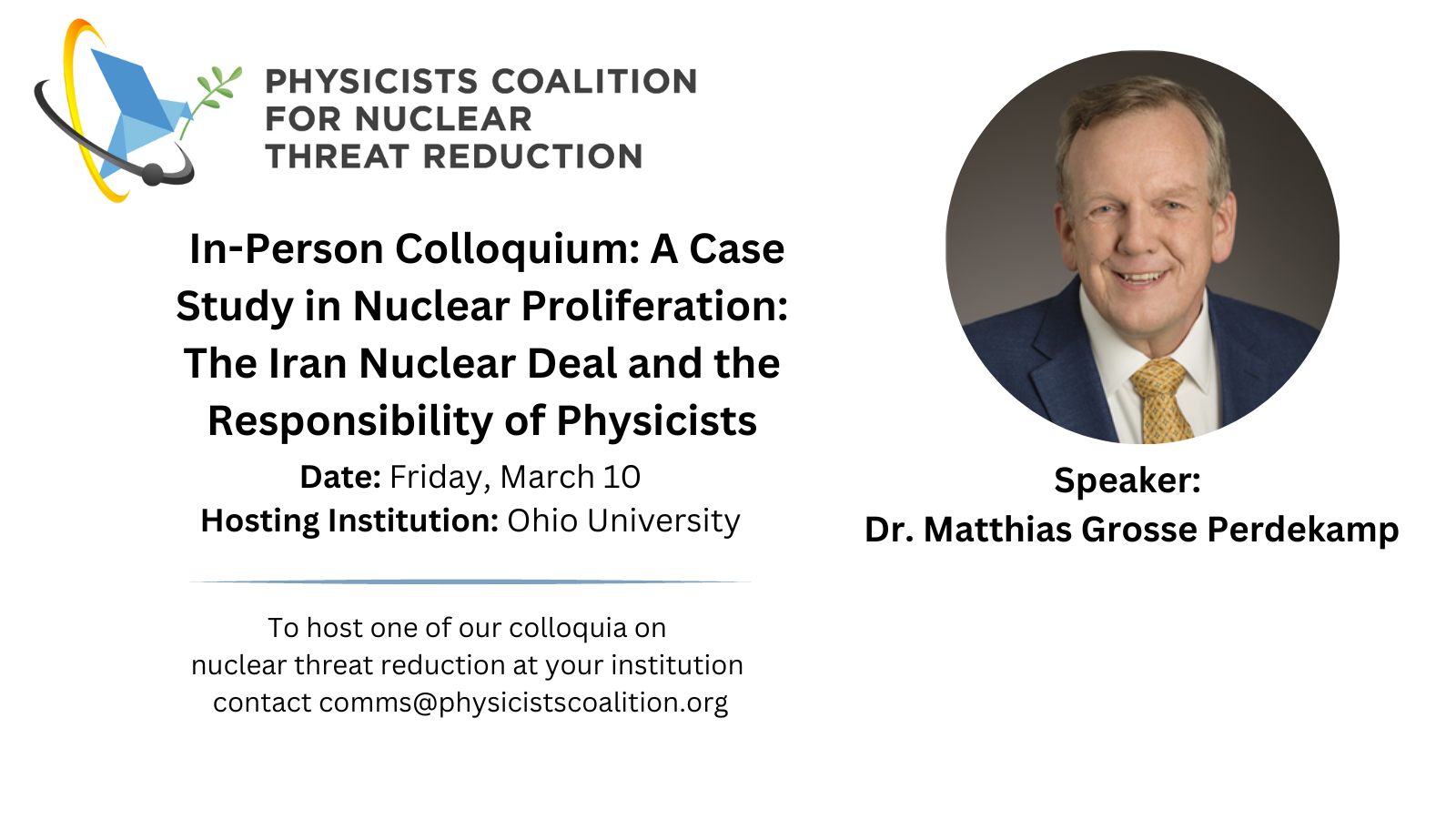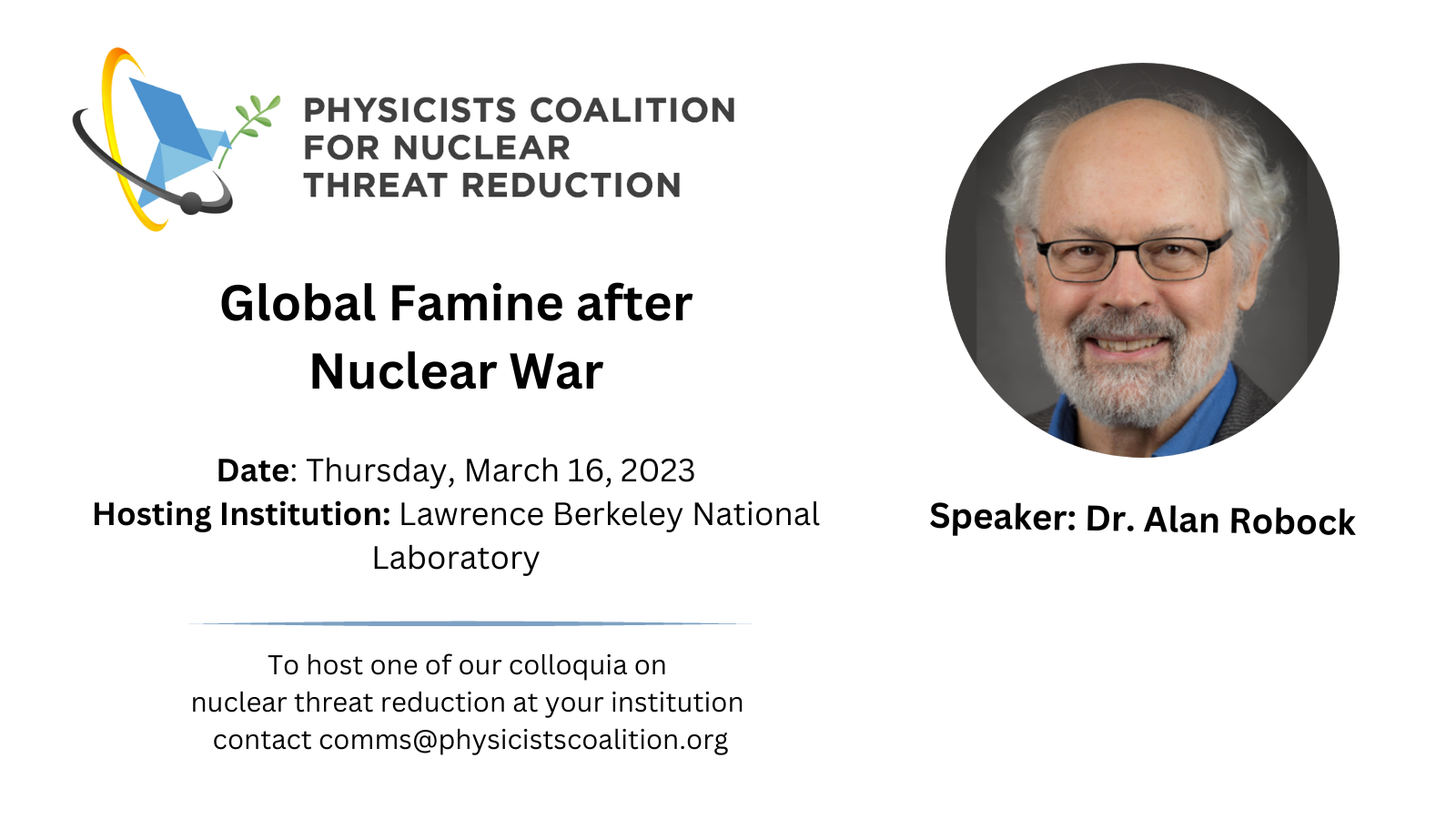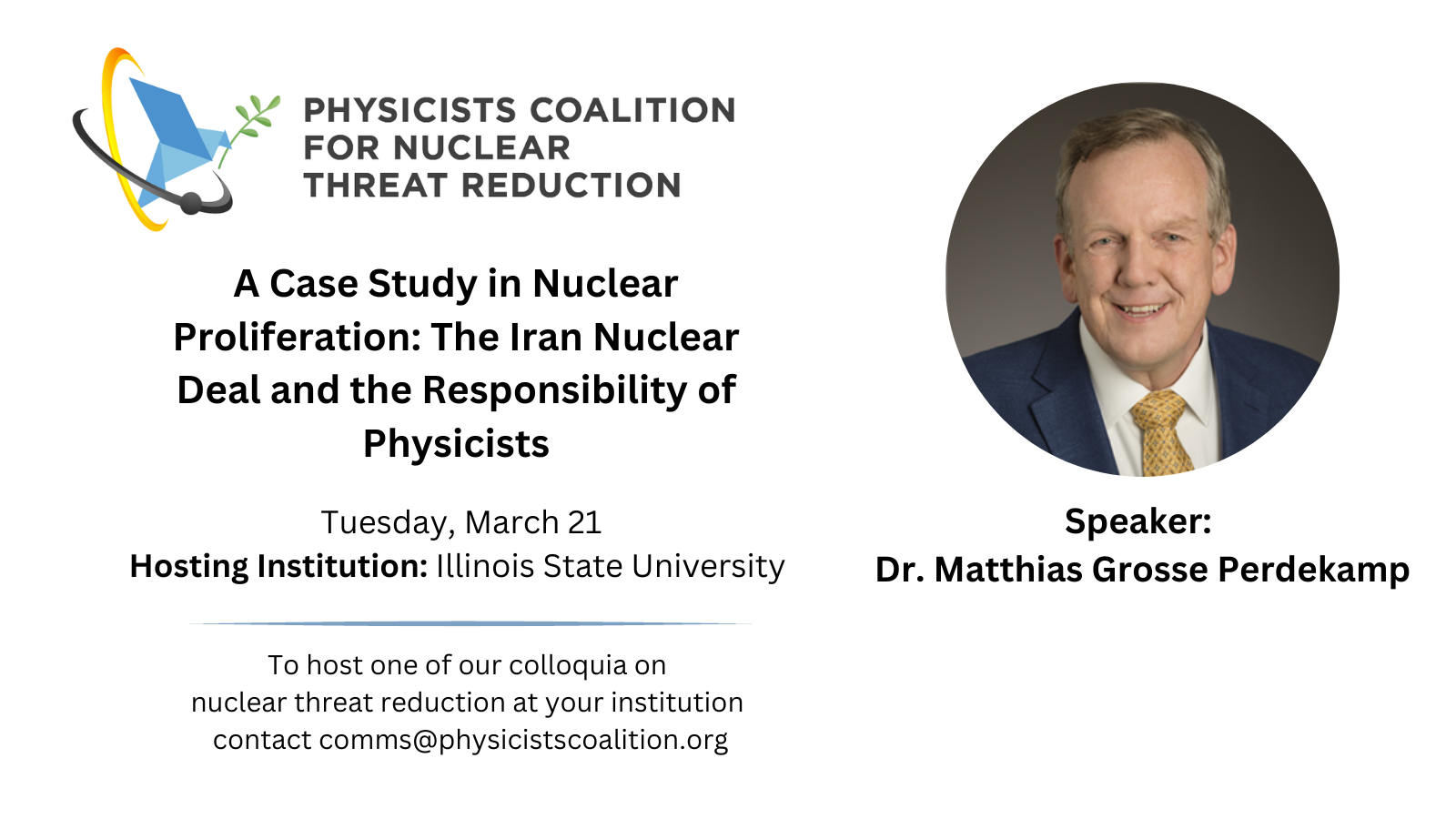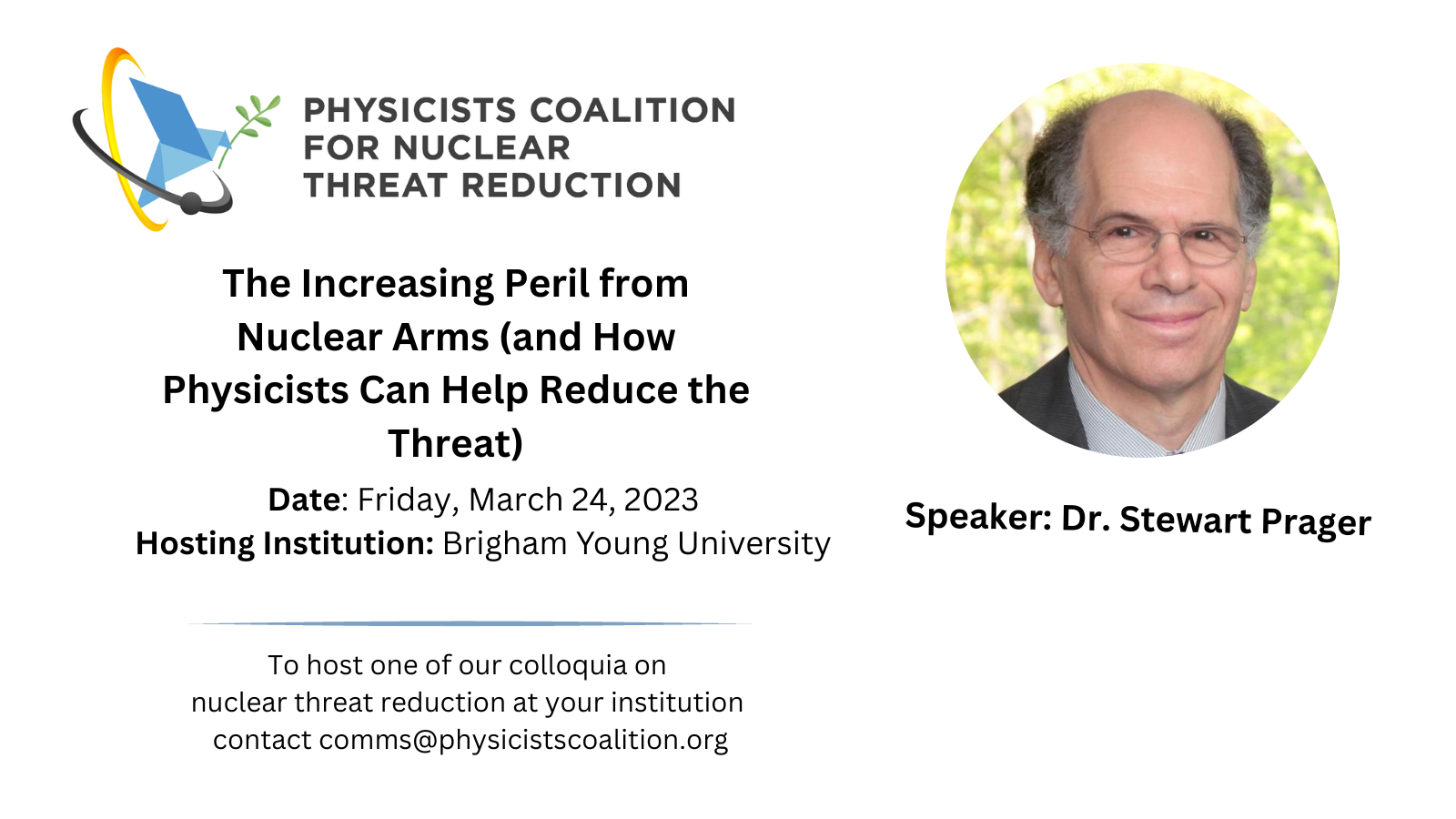Nuclear Arms Racing
Our September 13, 2021 webinar discussed the dynamics of a nuclear arms race between the US, Russia, and China. Speakers include Steve Fetter (University of Maryland, College Park), Laura Grego (Union of Concerned Scientists), Lyle Goldstein (Naval War College), and Pavel Podvig (United Nations Institute for Disarmament Research – UNIDIR). https://www.youtube.com/watch?v=aQqBGnkVLpU

